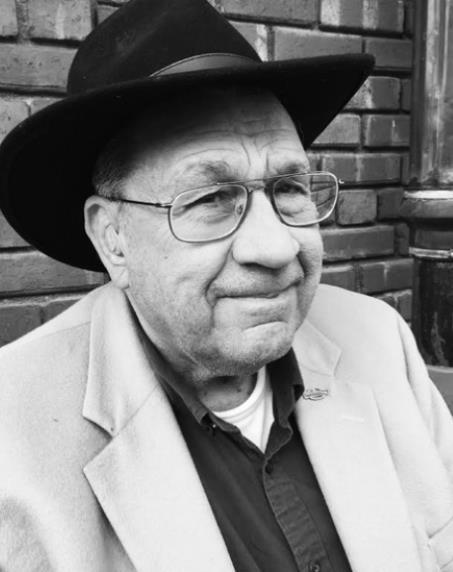
THE JOURNEY CONTINUES: Guest Column by Paul Buntyn
Editor’s note: This week’s column is a continuation started last week by Pastor Paul Buntyn, founder of the Abundant Life Christian Church in San Marcos, where he served for 27 years as Pastor. Buntyn has educational degrees from Manhattan Bible Institute, Incarnate Word University and Oral Roberts University.
Pastor Paul writes:
Before I share my personal history, I ask that we review what American History tells us, if truthfully taught. America did not start off as the ‘Home of the Brave and the Land of the Free’. The Native Americans felt first-hand the force of white Europeans who were thirsty for power and wealth and lands and who broke many treaties with tribes, killing the Native peoples — Braves, women, and children. They took their lands and moved the Natives to unknown lands (recall The Trail of Tears under President Andrew Jackson) where the original Americans faced unknown disease and squalid reservations. Many Native American Tribes are still not shown dignity nor are they receiving the benefits of the land which was their birthright.
Then across three and a half centuries — from 1501 to 1867 — more than 12.5 million Africans were captured, transported, and sold to the Americas. The Africans who came to Virginia in 1619 had been taken from Angola, West Central Africa, and brought to Jamestown, Virginia. Thus, began a brutal life of slavery for people of African descent. Even as the colonists united and won freedom from England, the mind-set of the framers of the Constitution in 1787 wrote in Section 2 of Article One that a slave was enumerated as only 3/5th of a human being in the count to determine how many Representatives each of the 13 States were allowed in Congress.
Many, but not all, of our Forefathers who were White considered it normal to own, buy, and sell blacks — Africans and descendants — as slaves. These people were considered as ‘property’ to increase their owner’s wealth; marketing them for profit. It was written in the Law of the Land. As their numbers grew, there were some slaves who resisted. Therefore, to ‘keep order’ by the Civil War, a subculture of Whites was hired to be slave catchers or slave chasers; paid to return runaway slaves to their rightful owner — a ‘Master’. Unarmed slaves were brutally beaten, dragged, chained, and even jailed or lynched (Jamestown Rediscovery).
Now what does this have to do with growing up Black in America? I am so glad you asked. Because the African was viewed as a lessor individual according to ‘the powers that Be’, educating them was against the known law and considered unnecessary. It was illegal to teach an African slave to read and write; and it was illegal for an African to speak in the native tongue. Even after the end of slavery, the Negro schools had inferior facilities, inferior books, and subject matter written by ‘the ones who controlled the local educational system. Growing up in my neighborhood, which was 98% Black-American, my schooling took place in inferior facilities, studying books written according to white mores with few references to any Black professionals, writers, inventors, or heroes.
At home in the 1950’s television shows did not include Blacks in roles that were respectful and could motivate young people like me to achieve. One exception was a film about Jackie Robinson; but most do not know that Jackie Robinson’s brother, Mack, was an All-State athlete, a college graduate, who could only get a job as a janitor. An underpaid janitor at that.
I did have a low self-image as a youth. The mind set of inferiority travelled with me into many places. Now one cannot see that ‘spirit’ but as a black youth, I just kept learning how to make the best out of the cards I was dealt
• I was a gifted musician — by the sixth grade I could play six different instruments exceptionally well. I was one of two students selected from my Harlem Elementary to attend an audition for a scholarship to the Musical Conservatory, Manhattan. Note: Harlem is in the middle of Manhattan. Hundreds of students came to try for one of the ten scholarships given by the musical committee (I feel sure you know this committee was all White). After hearing all the participants, our scores were listed as the second and third highest. Yet we were not called — it felt sickening to be one of only two Black students in the sea of White who were told by one of the judges that we were the two best, yet not rewarded with a scholarship.
• I did not make my high school basketball team due to an unwritten rule that a team cannot have more blacks on the team than whites.
• My Grandmother had me and my siblings marching on 125th Street in Harlem to challenge the rules for employment and shopping for black people. The stores would not allow us inside; and if we touched anything, we would have to buy it. If adults could not pay for the item, we would be arrested.
These are just some of the ‘light stuff’ of growing up black in New York, America. Making the best out of bad situations was our norm. It is engraved in our DNA to survive systemic racism, and there is still systemic racism in 2020. I want to encourage all to open your hearts and eyes to be educated so you can understand that systemic racism does exist. Therefore, I am sure, that we march today.











